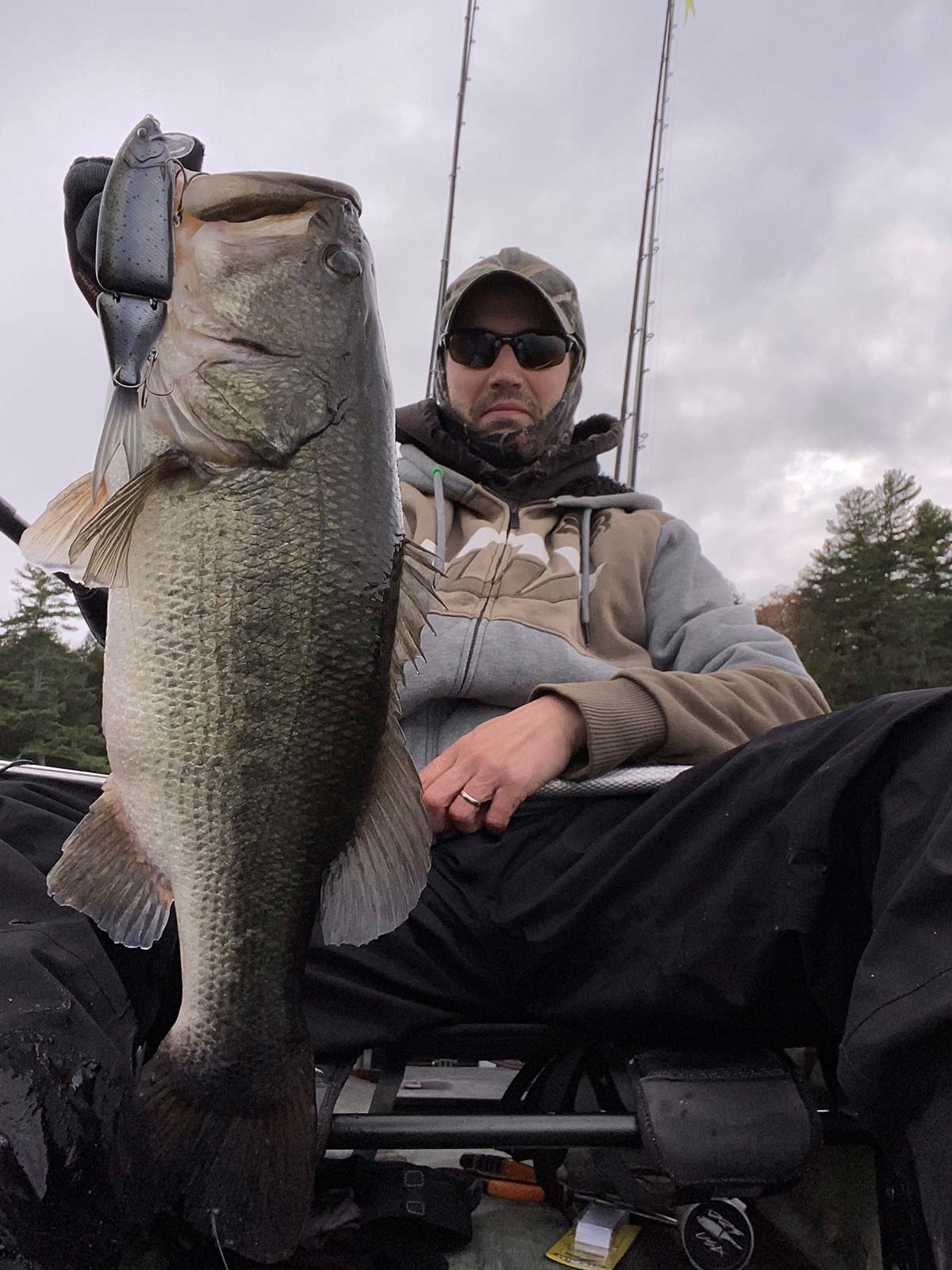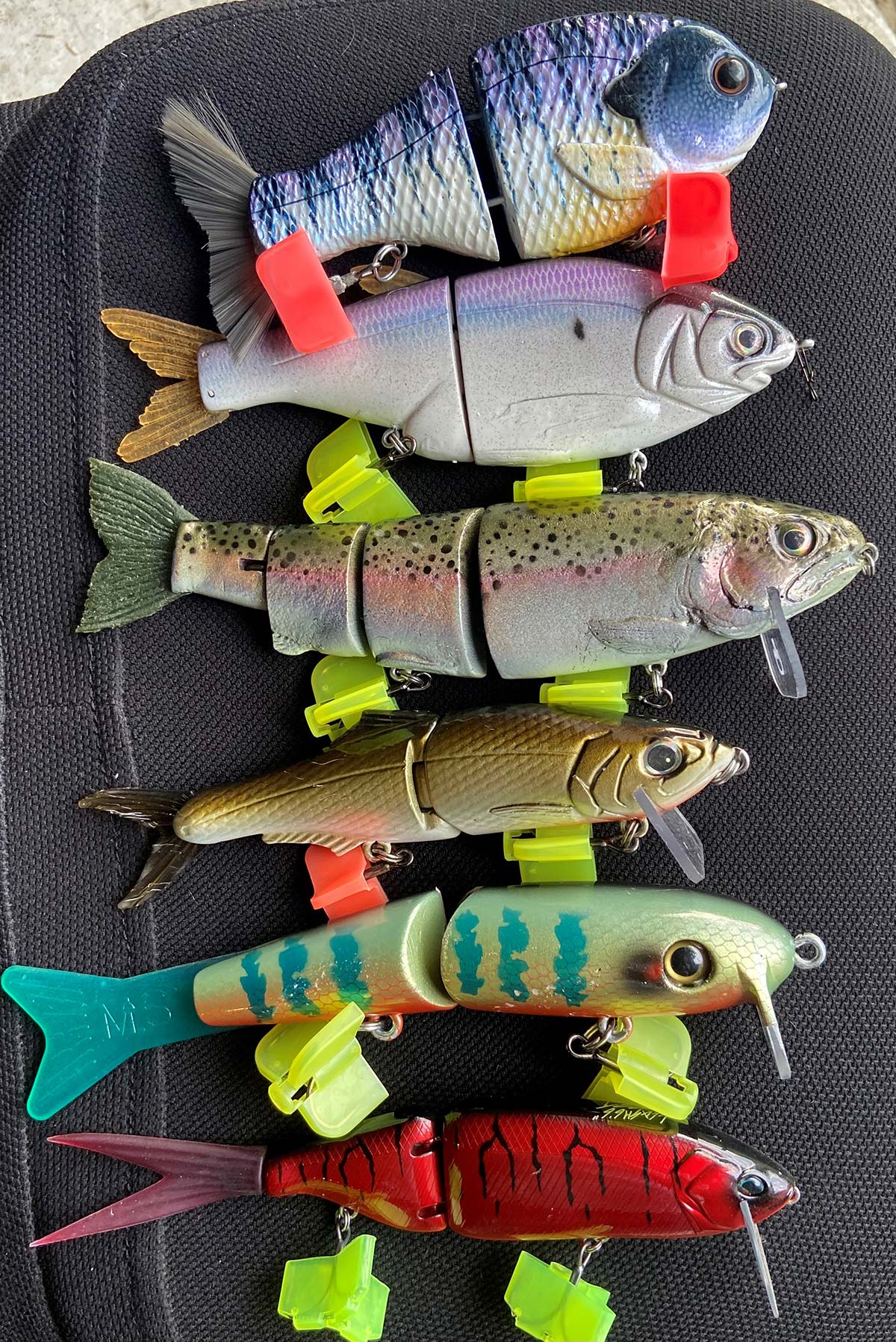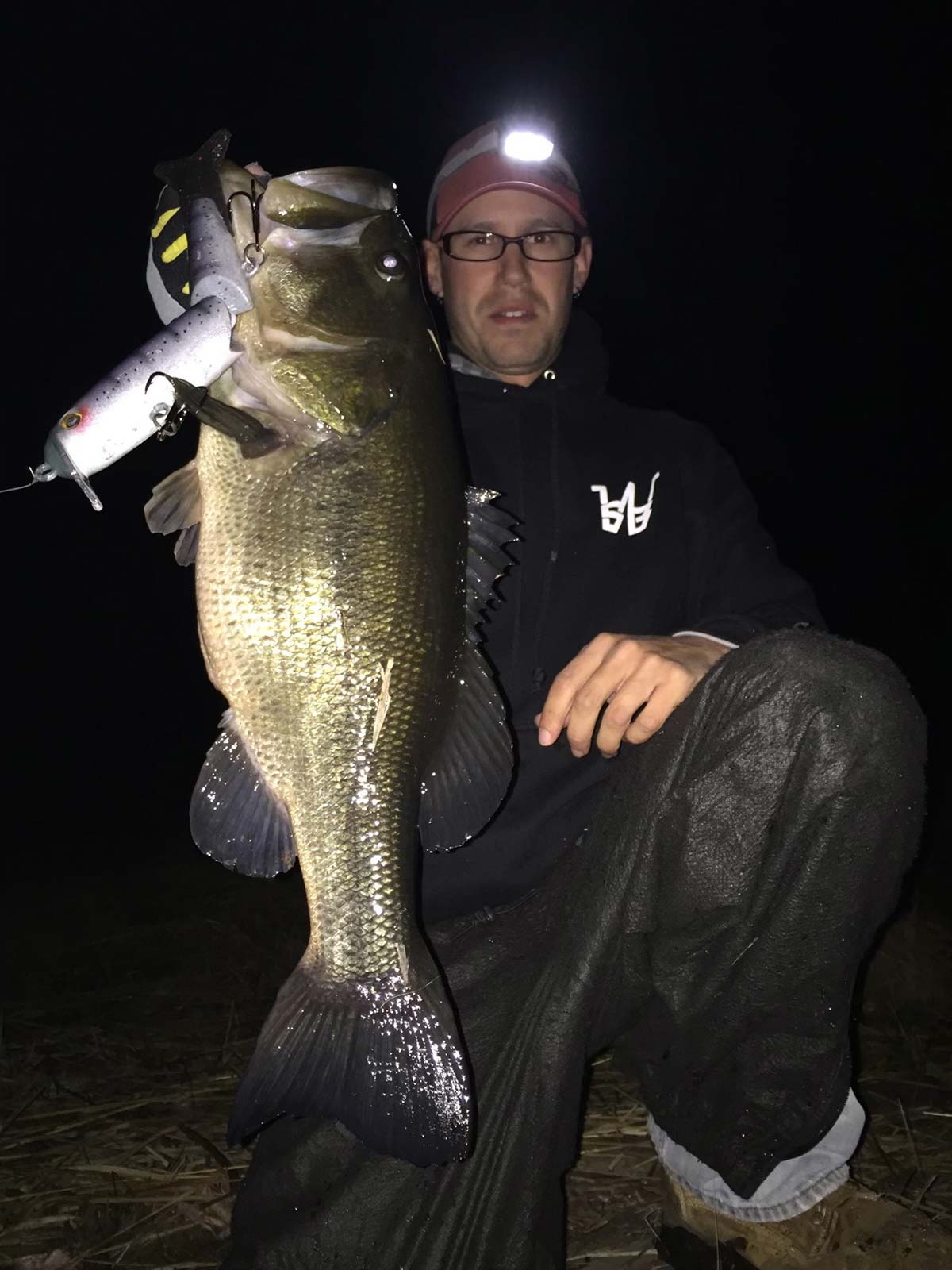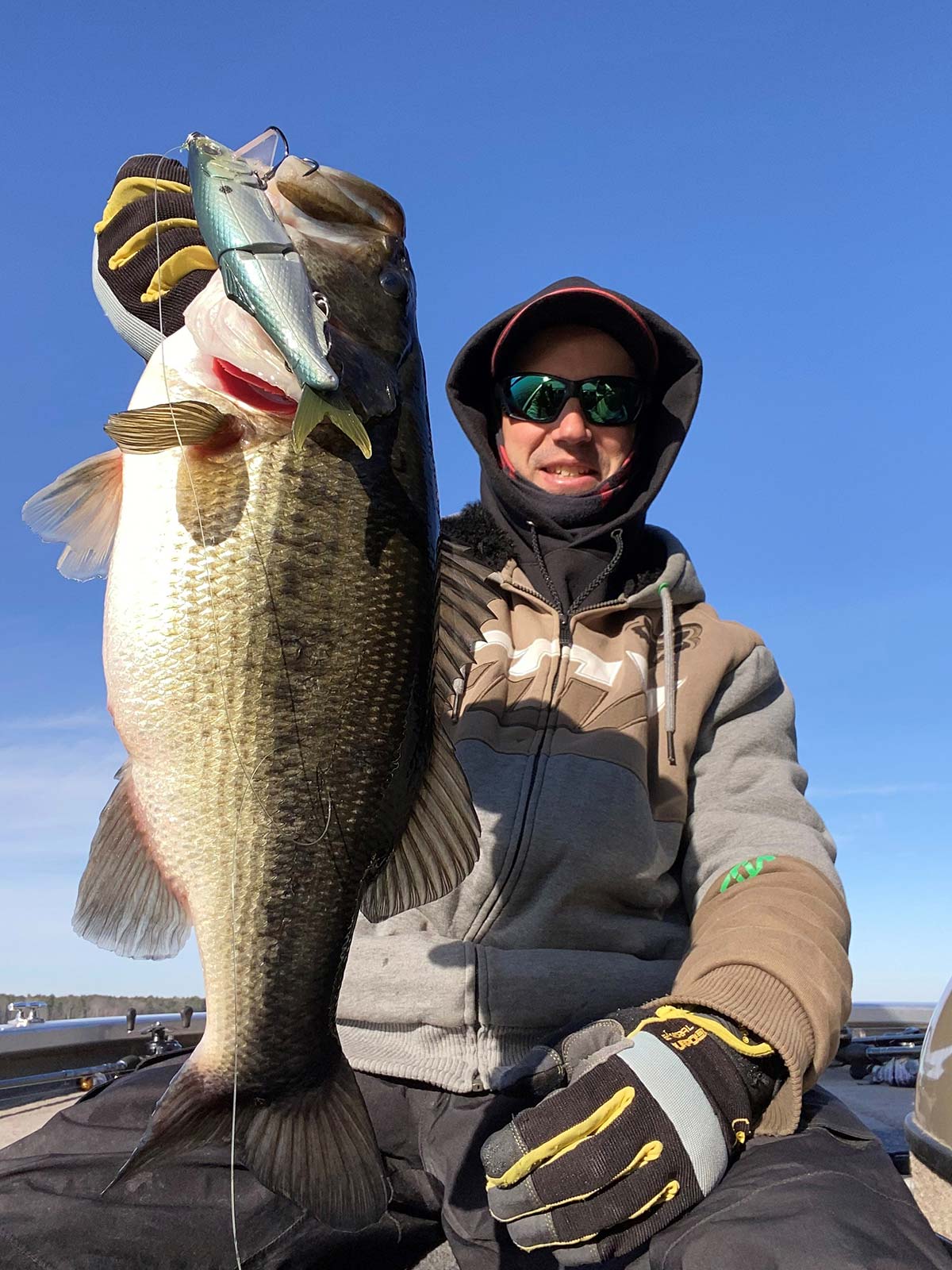
The ‘fall feed’ makes largemouth bass feed with urgency and increases your chances of hooking up with big baits.
The kids are back at school and pumpkins are on the porch. The nights are brisk, the mornings are cool and many of the days are filled with warm sunshine. The leaves on the trees are turning beautiful shades of yellow and orange. These things can only add up to one thing: fall has arrived.
With that comes a highly-anticipated time for bass fishermen, known as the fall feed. Bass begin moving to more predictable areas and feeding heavily to put on weight for winter. This marks one of the best times to be on the water for catching numbers of fish, as well as targeting big fish. It is also one of the best times of the year to be fishing with big swimbaits, which is my preferred method at this time.

The Fall Feed
Fall is a great time to chase big fish with big baits, it’s a time when the odds of catching a true trophy fish increase dramatically. These fish can feel the winter coming and they will be out in force looking for big meals so they can fatten up the lean season ahead. The fact the big girls are out looking for high-calorie scores makes this my favorite time of year for using big wake and crank-down baits, as well as big glidebaits. Some of my best producing fall baits are the ZFG Thundermouth wake, the 9-inch M.S. Slammer, 3:16 Lure Company’s cranking Hyper Herring, the Bullshad Glide Gill, Golden Baits Instigator Glide, and the DRT Tiny Klash. This mix of different styles and running depths gives me the options I need to imitate the different baitfish that are active at this time and to fish a variety of depths.
Fish often prefer to be higher in the water column this time of year due to the abundance of food and cooler water temperatures there, so these baits are great tools for probing the upper reaches of the column. Fortunately, when fish are feeding as heavily as they are in the fall, there is a wide range of baits that will draw strikes. If you prefer to fish shallow, there will be fish up around vegetation and shallow cover. If you’re more of a deep water angler, you’ll find fish around channel edges, deep weed beds, or deep rock piles. This will also vary to some degree depending on water temperatures and where in New England you are located.

Wake vs. Crank
Personally, I prefer fishing around shallow cover; lily pads, eel grass, brush, and arrowhead plant are some of my favorites. These are the areas where I will utilize my wakes and shallow cranks to probe in and around this cover. As the season wears on, some of this weed growth will die off, which often concentrates the fish around the vegetation that remains. Try waking an M.S. Slammer around the edges of brush or through lily pads in 4 feet of water or less.
In the fall the fish are typically quite aggressive and will rush to explode on a large waking swimmer. Later in the season as the water gets colder, I will start to slow my retrieve down a bit, adding pauses and twitches. This allows a cold, sluggish fish a bit more time to make a move on the bait. I will also often try cranking my wake down, even if it is just a few inches under the surface. The ZFG Thundermouth is a great bait for this technique as it can be cranked down a bit while still being fished at a slow to medium pace.
Another great technique this time of year is cranking a shallow/medium diving bait around submerged grass, secondary points, or channel edges. These are great areas to concentrate on where fish will be staging, waiting to ambush moving schools of bait. The 3:16 Lure Company cranking Hyper Herring has become one of my fall favorites for these scenarios. I concentrate on these areas in the 5- to 12-foot zone. In addition to using these areas for feeding, fish will use them as transition zones depending on water temperatures. This time of year, when the nights are getting chilly, the fish will often hold on these edges so they can feed in the shallows but they also have the option to quickly drop down into deeper water where the temperatures are warmer—this is a common pattern after a strong cold front.
Fishing one of these crank-style baits in these transition areas can really pay off. Don’t worry if your bait doesn’t reach the bottom, I have had great success cranking a bait down 4 to 6 feet over 12 feet of water. Just make sure to concentrate your efforts along or near the drop-off because that’s where fish will concentrate. Large bass will also use these edge zones as travel routes between shallower coves and deeper main lake structure as they prepare for winter.

Pick Your Days
We all know the best time to go fishing is whenever you have time. However, if I had to choose an ideal mid-fall day to go throw some big baits, it would be a warm, sunny day with just a light ripple on the water. These seem to be my fall “big fish” days. But don’t count out days with stiffer winds, sometimes this can really the fish fired up, turning on the bite. The sunshine is an important part of this scenario, because it warms the upper water column. This often makes fish more active and likely to feed. Above all, the fall is a great time to target big largemouths so don’t count out any day you can fish because of the weather. Even cold rainy days have coughed up some big ones for me.
Fall is a very special time when you live in New England, especially for those of us who wait all year for some of the greatest fishing days the calendar has to offer. Fish are feeding ferociously on big meals so they can bulk up for the winter. Swimbait anglers can take advantage of this by spending time on the water, chucking their favorite big baits and targeting shallow structure and depth transitions. The biggest fish in the lake become more vulnerable at this time simply because they are feeling an urgency to feed and are more willing to challenge a large baitfish. If you can put together a fall pattern on your favorite lake, you may be in for some of the most epic fishing days of your life.



